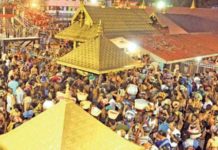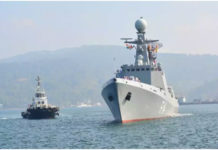The issue of inter-state water disputes in India is a very common phenomenon, each one potent enough to turn into a civil war by itself. And while there have been numerous bigger and uglier water conflicts before, the Mullaperiyar issue has been hogging the headlines over the last month making it serious enough for all you CLAT aspirants to sit up and take notice. This article, written by Noel Johns, from the youngest batch of NALSAR, will give you a comprehensive understanding on all you need to know about this issue from the examination point of view.
How did it all begin?
The Mullaperiyar Dam was constructed during 1887-1895 by the British across the Periyar River in the Travancore State (now Kerala) with a maximum reservoir level of 152 feet. It was constructed primarily to divert the westward flowing Periyar waters to the eastern side through a tunnel across the Western Ghats to the Madras Presidency area (now Tamil Nadu) which lay in the rain shadow area and thus drought ridden. Thus, what this effectively means is that while the dam and the river is owned by Kerala, it is controlled and operated by Tamil Nadu through a 999 year lease signed by the British. The dam, in its century old history, has provided irrigation to large tracts of land in Tamil Nadu, more recently hydroelectric power too and for all this, the state pays an annual rent to Kerala.
That’s great, but what’s the problem then?
The Mullaperiyar issue first cropped up in 1970 when the Kerala Government started voicing concerns about its safety. The average life span of any dam is supposed to be 50-60 years and the Mullaperiyar Dam had already completed more than seventy years of existence by then. Moreover the dam was built on primitive technology which did not adhere to the modern parameters of design and safety. And to top it all, the dam is situated in an increasingly seismically active zone. Regular earthquakes have hit the area, the biggest one being 4.5 on the Richter scale and studies by government institutions showing that the dam would not survive an earthquake beyond Richter scale 6 has lend added fear about the safety of the dam.
But the Tamil Nadu government refused to accept this reading of the security problem and refuted allegations of withering due to age; retaliating by showing the periodic maintenance efforts they had put in, in the 1930’s, 60’s, 70’s and later too. They also gave examples of even older dams (Kallanai dam, built around 2000 years ago by the Cholas) which still continues to operate to prove that age was not a big factor in dam safety.
The other bone of contention was the maximum reservoir level. The Kerala Government in 1980 demanded the reduction of the maximum level from 152 feet to 136 feet and after the Central Water Commission demanding the same, the Tamil Nadu government accepted it, but following a Supreme Court order in 2006 increased it to the original level. (Further reading: http://web.archive.org/web/20070311211445/ and http://www.deccanherald.com/deccanherald/feb282006/national2155542006227.asp)
What’s at stake for the two states?
The Tamil Nadu maintains that demolishing the dam will result in massive water scarcity resulting in crop failures and widespread drought in the state with decreased electricity production. Also agreeing to demolition would mean annulment of the 999 year agreement resulting in the surrender of the 8000 acres of land under its control to the Kerala Government. Thus, they allege that the demolition is an infringement of their water rights and that the Kerala government has its eyes on controlling the new dam to its advantage in case of a demolition. It also accuses the Kerala government of whipping up a fear wave among its people about the safety of Mullaperiyar.
For Kerala the main cause of objection has been the safety of the 116 year old dam and the potential consequences of a collapse. Such an event would result in five districts in the catchment and the river basin area to be washed away, putting at stake the lives of 3.5 million people. It has even agreed to undertake the expenses of building a new dam and has assured the Tamil Nadu government of continued sharing of water after rebuilding the dam.
Ah! So what’s the current situation?
In February 2010, the Supreme Court taking cognizance of the seriousness of the situation constituted a five member empowered committee to review all aspects of the issue; the committee headed by Justice A.S. Anand(former CJI) comprised of one nominee from each state- Justice K T Thomas from Kerala and Justice A R Lakshmanan from Tamil Nadu (both former Judges of Supreme Court). The Committee is expected to submit its report by April 2012.
Over the past six months, the two state governments have been at loggerheads with each other with no clear solution in sight. It has turned into a political endgame and with the Union Government playing a dormant role (the Dam Safety Bill is still pending in Parliament), the situation has turned worse in the ground level with violent clashes being reported on the borders.
The Mullaperiyar issue can be understood in its entirety by the following paragraph as stated by the Frontline: “For every argument raised by Tamil Nadu in support of its claims, there is counter-argument in Kerala that appears equally plausible. Yet, each time the controversy gets embroiled in extraneous issues, two things stand out: One is Kerala’s refusal to acknowledge the genuine need of the farmers in the otherwise drought-prone regions of Tamil Nadu for the waters of the Mullaperiyar; the other is Tamil Nadu’s refusal to see that it cannot rely on or continue to expect more and more from the resources of another State to satisfy its own requirements to the detriment of the other State. A solution perhaps lies in acknowledging the two truths, but neither government can afford the political repercussions of such a confession”
For further reading:
http://www.tehelka.com/story_main51.asp?filename=Ne171211Damned.asp
http://www.rediff.com/news/slide-show/slide-show-1-what-is-the-mullaperiyar-dam-issue/20111201.htm















Had some idea about this issue but thanks a lot for this elaborated master piece:)
Thanks a lot 🙂 Very informative and well written.
Thanks a lot! I have one small doubt. Can we be asked questions on the history of any particular current event? As in, for eg, since the Mullaperiyar dam has been in the news this year, could they ask us when it was built? Or could we be asked something like when the Bhopal gas tragedy took place since Dow Chemicals has been in the news for the London Olympics?
This is nice.
I observe you have tried your best to be unbiased, Noel! 😛
he did say it was hard to be unbiased in the mail where he sent this article. thats why this article is so special!
awesome…… write something about other imp stuff too…..FDI, occupy wall street movement…etc…… thanks!!! 🙂
hey both the lonks that have been given for further reading are not accessible….oh and great post btw..gave a clear idea about the issue
*links
This issue was slightly foggy in my head. Thank you, Noel!
thank a lot for this one !
You have quoted a Frontline article, as means to understand the Mullaperiyar issue. An excerpt states “each time the controversy gets embroiled in extraneous issues, two things stand out: One is Kerala’s refusal to acknowledge the genuine need of the farmers in the otherwise drought-prone regions of Tamil Nadu for the waters of the Mullaperiyar; the other is Tamil Nadu’s refusal to see that it cannot rely on or continue to expect more and more from the resources of another State …” The article makes no mention of a genuine fear in the minds of people living downstream, that a collapse of the dam wall will result in all of them meeting a watery grave. On the one hand Tamil Nadu has been blocking the Kudankulam project, despite it being based upon 21st century technology, simply on unfounded fears of possible earthquakes, tsunamis etc. But they deny the same rights to the people in Kerala, and justify full faith in a 19th century structure, which has sprung leaks all over. If all that Tamil Nadu is concerned about is uninterrupted water supply, why can they not accept Kerala’s assurances, which can be counter-guaranteed by the Centre.
appreciate the work on mullaperiyer dam and i got the reason why govt of tamil nadu is against the release of the film dam999. thank you team 😀
tnk u Noel fr dis informative script…read dis mater fr d first tym n nw m xtermely clear of everythin in dis case …pls keep writin bout such maters…
🙂
thank u !!